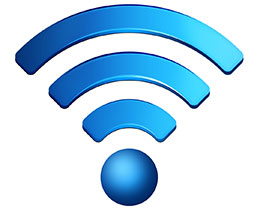Spring 2013 Volume 15, Issue 1
Wi-Fi Security Tips
by Kam Abado
Wi-Fi spots are everywhere, including coffee shops, libraries, airports, hotels, schools, and many other locations. Public Wi-Fi hot spots are open networks that are vulnerable to security breaches. Some do not encrypt data, so your email, passwords, and other information can be visible to hackers. Here are few tips to make your Wi-Fi interactions in public locations more secure.
- Make sure your firewall is enabled
A firewall prevents unauthorized users from gaining access to your computer through the Internet. All Windows Operating Systems come with a firewall. Make sure it is enabled. - Choose more secure connections
When possible, look for wireless networks that require a network security key or password. Using these networks, protects the information sent over the secured networks as the information is encrypted. - Protect your account with https
An https (secure) connection is more secure than an http connection. After you log on to your account on a public network, your information can be open to hackers, unless you use a more secure connection. An https connection also provides encryption. Western's web based Convergence email uses https. - Disable file and printer sharing
File and printer sharing allows other computers on a network to access resources on your laptop. When it's enabled, it leaves your laptop vulnerable to hackers. The best practice is to disable file and printer sharing if you don’t need that function at home or at work. - Encrypt your files
Protect your files by encrypting them, which requires a password to open or modify them. Microsoft Office provides encryption and there are several encryption software tools available, such as TrueCrypt, on the market. - Disable your Wi-Fi adapter
It’s a good idea to turn OFF your laptop or notebook’s Wi-Fi capability when you’re not using it. With Wi-Fi on, your device might automatically connect to a malicious Wi-Fi without you realizing it. Many laptops now have a Wi-Fi hardware button or a switch to disable and enable the Wi-Fi adapter quickly. If you’re not sure where it is, check on the manufacturer’s website for instructions.
Contact SSTS
Service Desk Request
519 661-2152
Ext. 82152
SSC Network Update
Managing Editor
Mary Van de Ven

